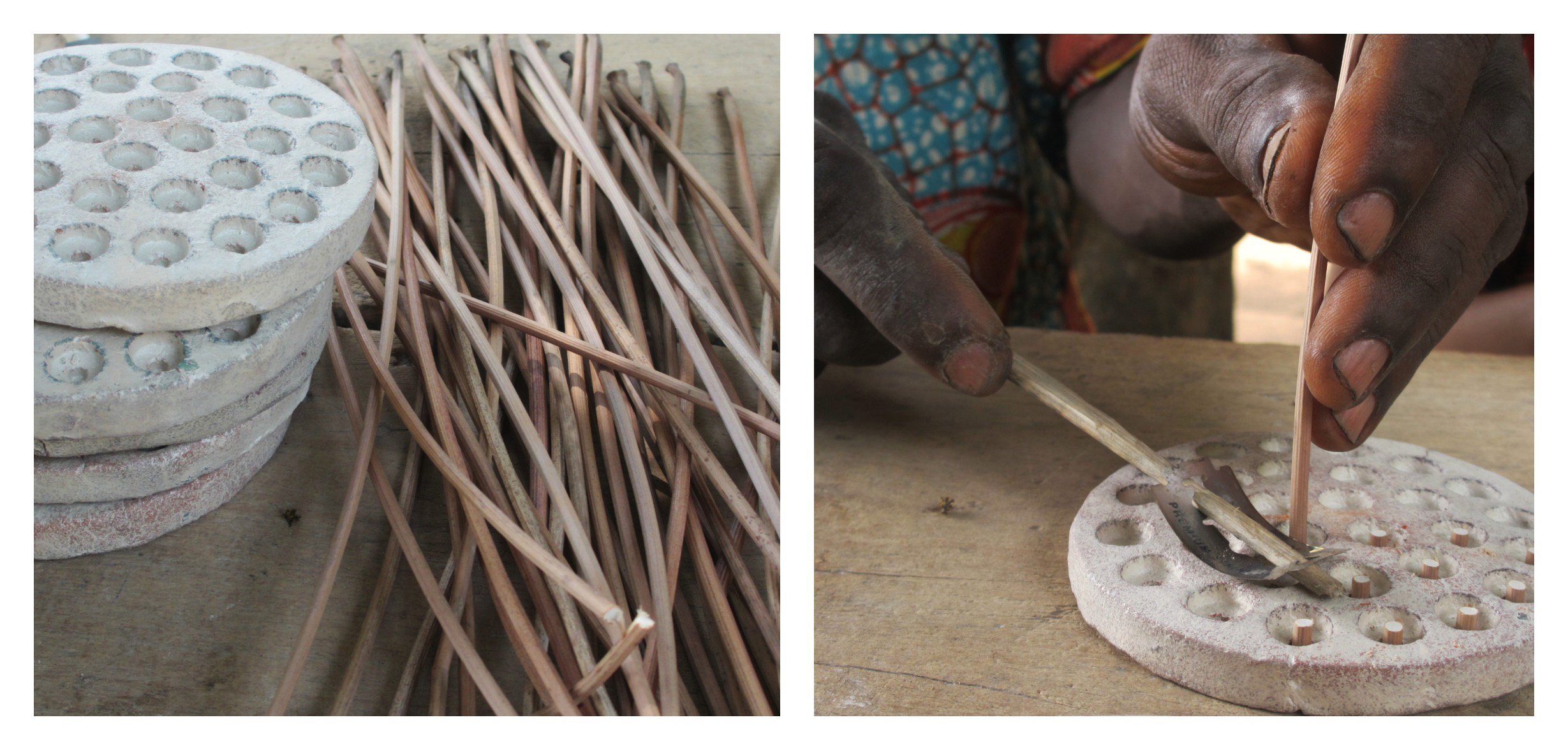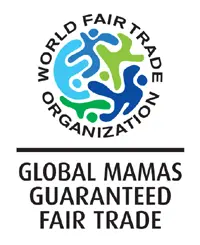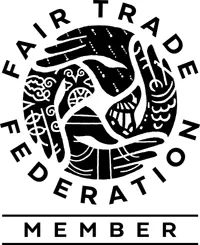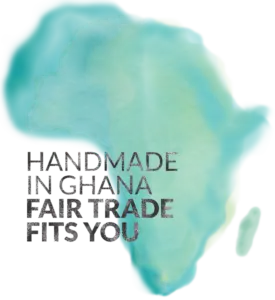Sophia Khan, Marketing Volunteer
Odumase Krobo in the Eastern Region of Ghana is renowned for its glass beadmaking and is home to the historic Agomanya bead market. It’s also where you will find the Global Mamas Krobo Bead Cooperative. This talented group uses techniques passed down from generation to generation to craft a wide variety of beads that are transformed into jewelry for audiences across the world.
Based in a shady outdoor workshop in Odumase Krobo, brother and sister team Grace and Moses recycle piles of old glass bottles into the beads their region is famous for. The pair have been making beads for many years as their family trade, but they’ve been partnering with Global Mamas for the past ten. In 2016 this talented duo were chosen as the Global Mamas’ “Mama and Papa of the Year” for their extremely high quality beads– less than 1% have quality issues which is very low for this delicate art.
Preparing the Glass Powder
The first stage in the bead-making process is the physically demanding job of crushing the recycled glass into small pieces using what looks like a large pestle and mortar. The glass is further refined by going through the process a second time, then the fine powder is sieved to remove any larger pieces.
Filling the Clay Moulds
Next, Grace and Moses prepare the clay moulds used to shape the beads– which in this case will be small flat discs that we use in a rainbow of colors throughout our jewelry pieces. The hole for threading the beads is preserved by inserting a small piece of cassava leaf stalk into each indention, then the ends are trimmed with a razor blade.

Once all the moulds are filled Moses adds ceramic pigment to the glass powder and mixes it thoroughly to color the beads. He then fills the moulds with the colored powder, tapping each tray to make sure there are no gaps before brushing away the excess powder with a feather– you may have noticed that many tools used in the bead-making process are resourcefully made from things found all around in nature!

Firing the Beads
Grace piles the filled moulds onto a board and takes them over to Moses who places them carefully in the kiln using a long-handled spatula. The kiln is heated with a wood fire to reach a high enough temperature to melt down the glass powder.

After anywhere from 15 to 30 minutes, Moses removes the fired beads from the kiln and leaves them to cool. The dyes which started out as pale pastels darken to their final bright hues through the course of the firing.

Loving the Product
Finally, Grace rinses off the beads in cold water, adding a handful of sand to smooth off any rough edges. She threads them onto a string and the finished orders are packed up and sent to the Global Mamas office, where a team of bead assemblers transform them into a wide variety of bracelets, necklaces, and earrings as a colorful accent to your wardrobe!

These colored discs are specifically used to make products like our catch of the day bracelet. In addition to our ready made jewelry creations, customers can purchase bags of our beads to incorporate into their own crafty projects!

Thanks for supporting the fair trade, handcrafted way.




